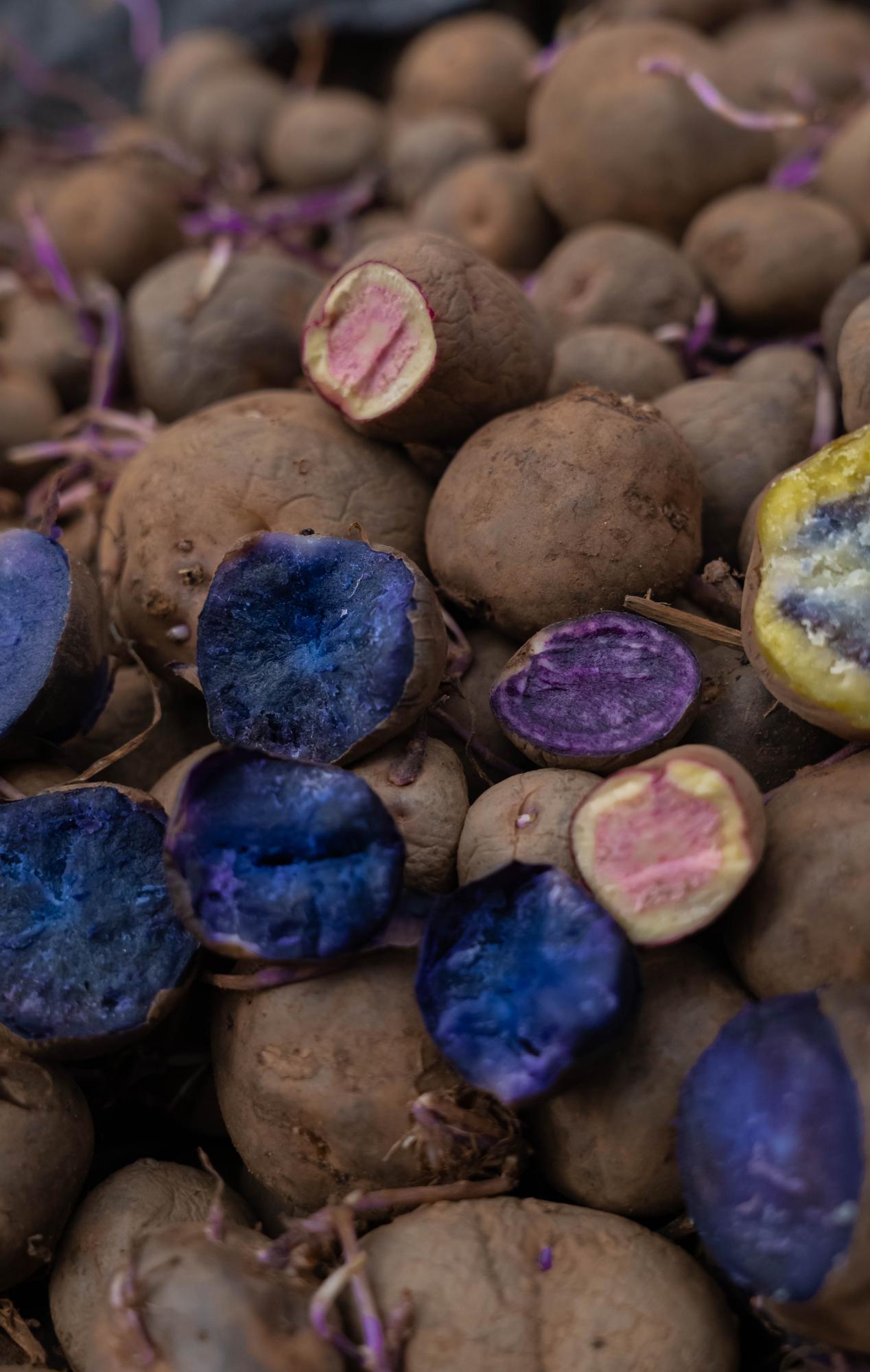Photo Story by Johanna Chavez-Miguel 2022
Agrobiodiversity on the Andes
On the high Andes, millenary food systems are maintained by family farmers. More than 4,000 tuber varieties exist on the Andes, which have been grown (organically) for 7,000 to 10,000 years. In regards of their high nutritional value, native potato production is an important livelihood strategy and pathway for strengthening food security of family farmers.
The high Andean ecosystems, where the potatoes are grown, are threatened by climate change. Rising temperatures lead to glaciers meltdown and drought.
Potato landscapes are usually small plots of marginal rain-fed land (i.e. with slopes and rocks), poorly connected to urban centres and infrastructure, and often not privately but communally owned. Potato landraces are mainly grown by family farmers on high Andean landscapes at around 2.500 to 4.000 m.a.s.l. Farming work at this altitude and marginal conditions can be extremely challenging and farmers must absorb many risks.
Although potato production is based upon the entire family nucleus, women play a vital role in preserving millenary landraces. The knowledge that women have about production and consumption practices, as well as nutritional and medicinal uses, are key for the conservation of Andean Agrobiodiversity. The future of Andean agrobiodiversity is female! Farmer women lead many of the activities in the Peruvian household. Their main role is ensuring the family's economic security, marketing the produce, and ensuring the family’s nutrition and wellbeing.
Further traditional practices still exist today, which contribute to the resilience of food systems. Practices of reciprocity are maintained, such as ayni and faenas, in which community members come together to do farm work at each others farms and together overcome the challenge of labor shortage.

Photo 1: Traditional land uses: production on terraces in Laraos, Lima.

Photo 2: Native potato varieties Coto Coto Market Huancayo, Junín.

Photo 3: High Andean landscapes under the effects of climate change. Drone footage. Pastoruri Glacier, Ancash

Photo 4: Potato landscapes. Paucara, Huancavelica.

Photo 5: Farmer preparing the land for planting potatoes Pampa de Quinua, Ayacucho.

Photo 6: Woman selecting potatoes for selling and for planting the next season. Ancash.

Photo 7: Women farmers: mothers, nurtures, marketers. Pachitea, Huanuco.

Photo 8: Millenary practices for production and processing of tubers are maintained by farmers. Chuño, i.e., freezing the potato in the river during winter is a common practice for extending the shelf life of potatoes.

Photo 9: Community harvesting potatoes in a ‘Faena’. Huancavelica.

Photo 10: As agroindustrial production expands in the valleys, as well as other extractive activities like mining, family farmers must compete for land and water resources. Export-oriented blueberry farms in Ancash.
